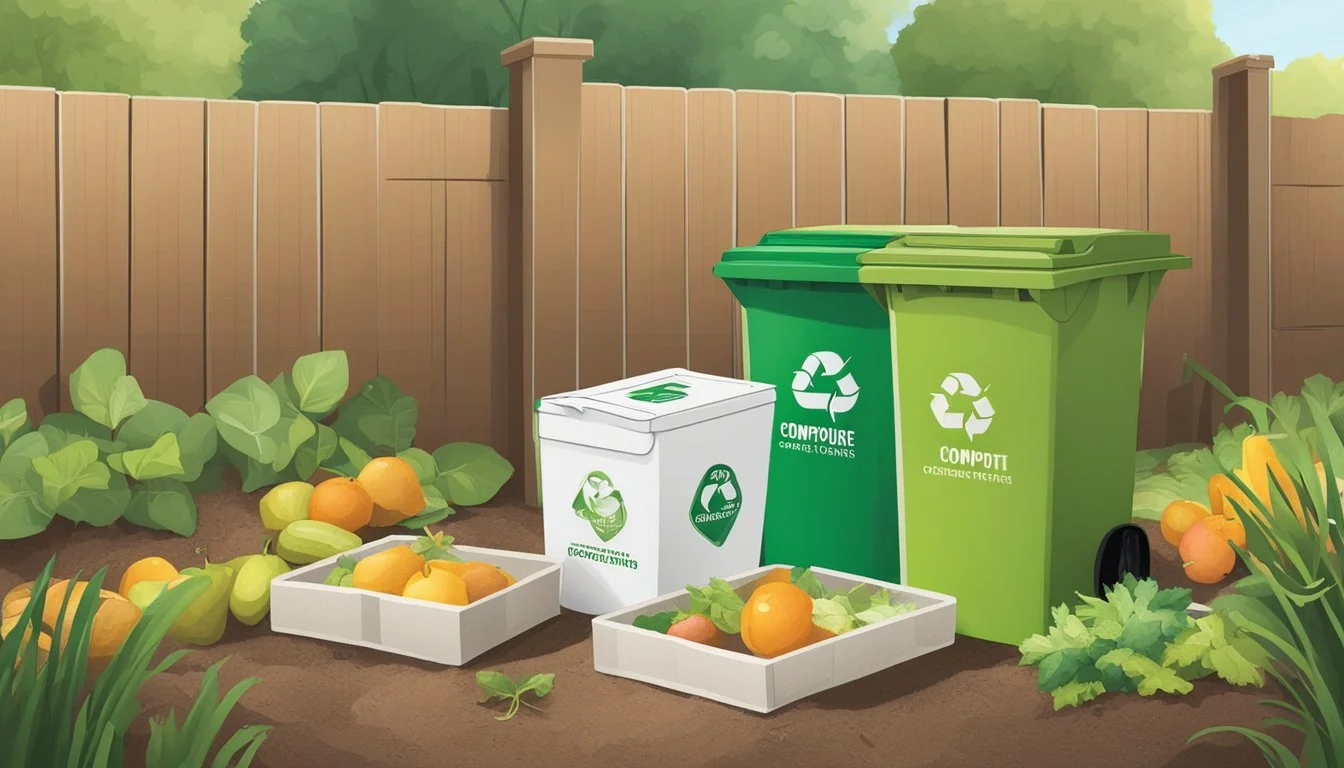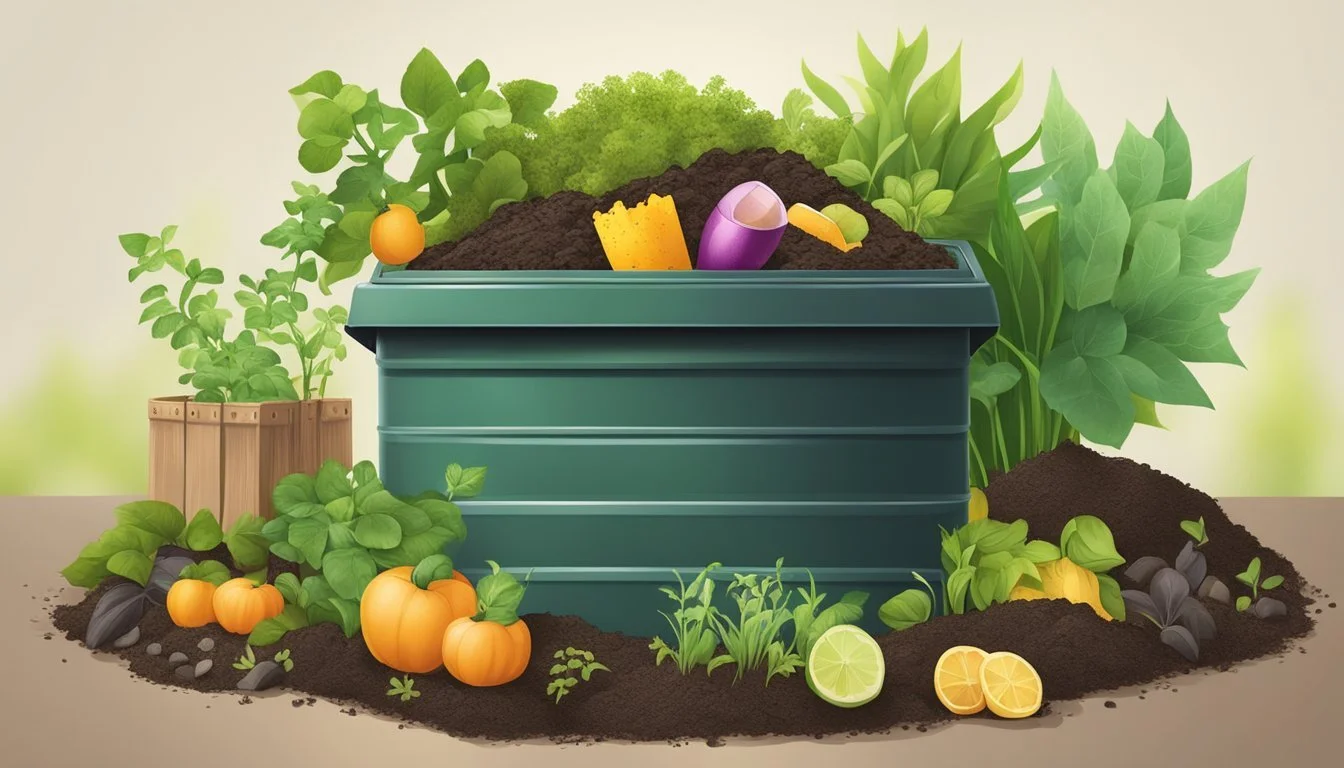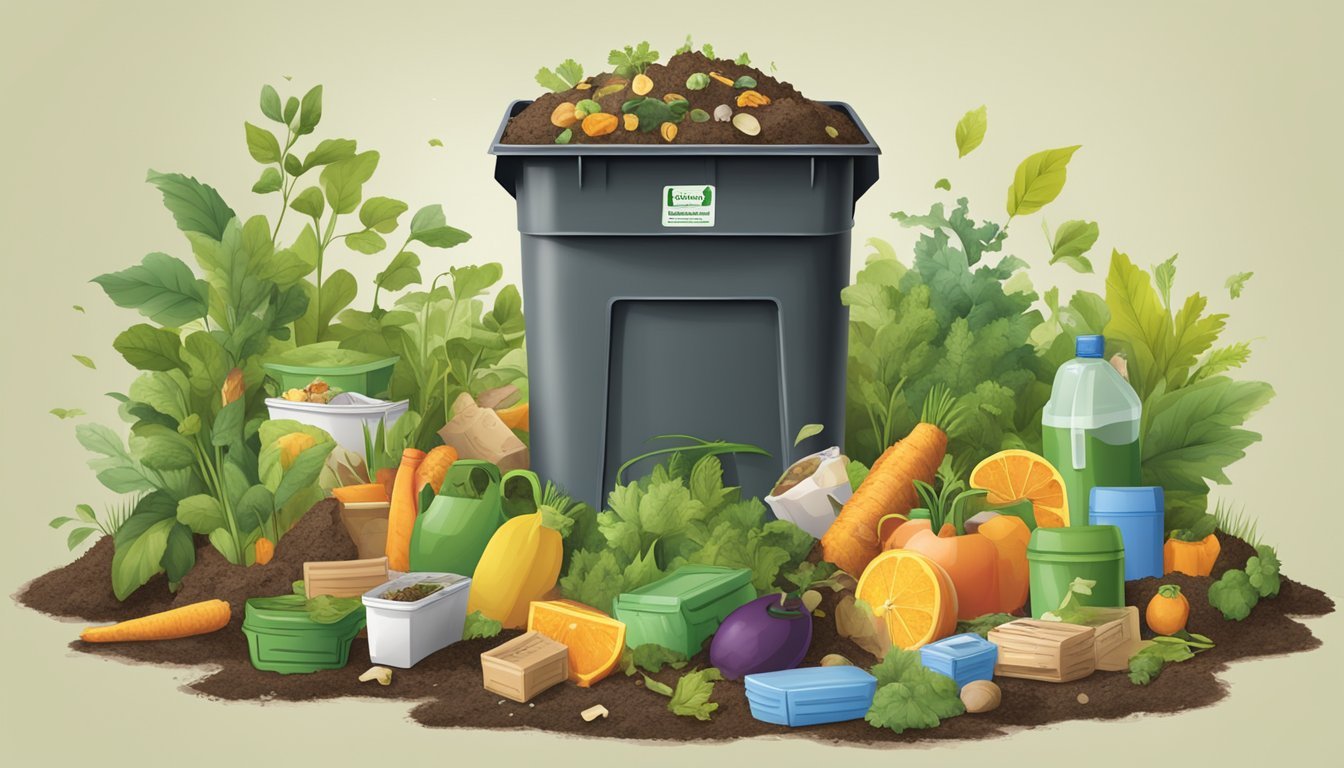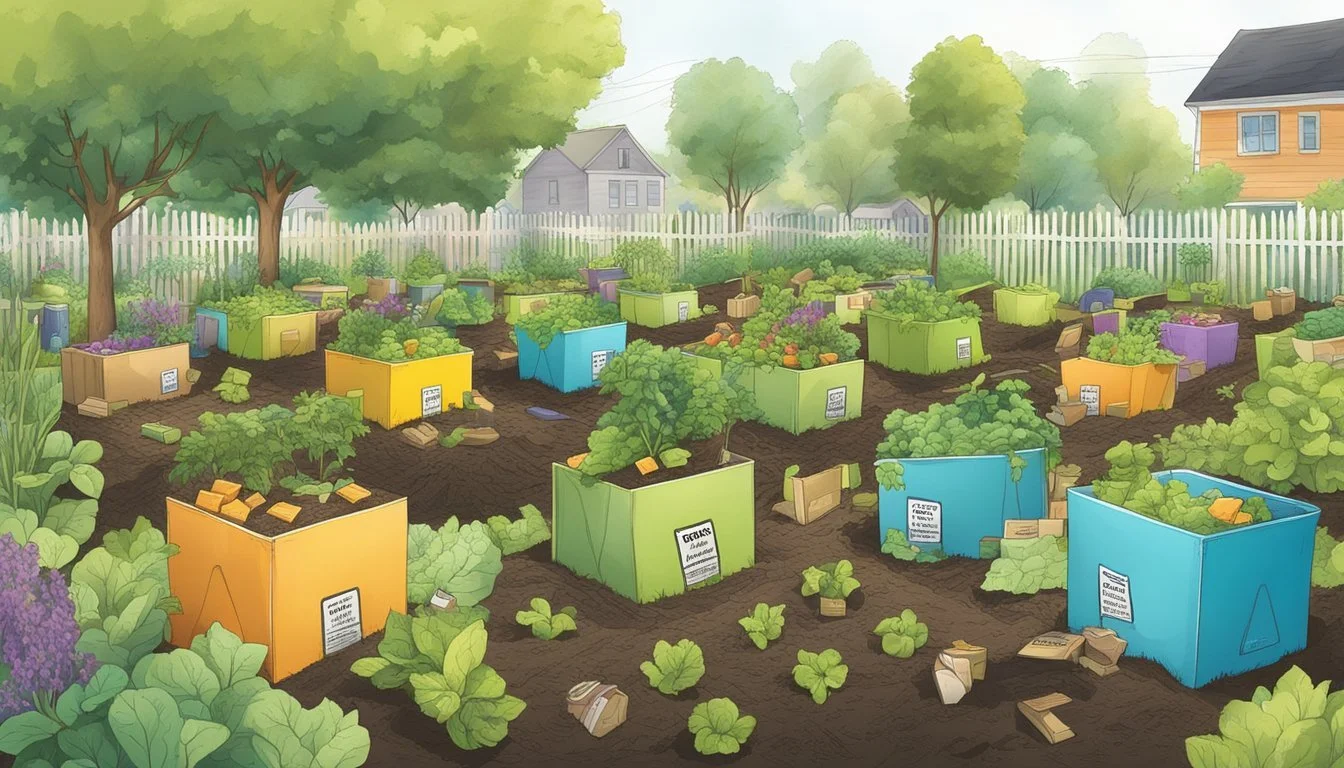Can You Compost Juice Boxes?
Unpacking Recycling Myths
Composting plays a significant role in waste reduction, and understanding what can be added to a compost pile is crucial for its success and the environment. Many household items are compostable, but there is often confusion when it comes to processed packaging, such as juice boxes. While these containers appear to be made of cardboard, which is typically compostable, juice boxes are lined with a thin layer of plastic and sometimes aluminum to prevent liquids from leaking and to preserve the contents—which complicates the composting process.
Juice boxes are not traditionally suitable for composting because the plastic and aluminum layers do not break down readily in a compost pile. Moreover, the inks and adhesives used on juice boxes may introduce contaminants into the compost. For environmentally conscious individuals looking to dispose of juice boxes responsibly, recycling is often a more appropriate option. Many recycling programs accept juice boxes and have processes in place to separate the paper content from the plastic and aluminum for recycling; however, such facilities' availability can vary by location. Therefore, checking with local waste management policies is the best course of action to ensure that juice boxes are handled appropriately.
Understanding Compostability
Composting is a natural process of recycling organic matter into a nutrient-rich soil amendment, essential for maintaining a sustainable and healthy ecosystem. This section explores the principles of composting, distinguishes between compostable and non-compostable items, and sheds light on the types of materials suitable for the compost bin.
Composting Basics
Composting requires balancing green materials, which are nitrogen-rich items like fruit peels, grass clippings, and coffee grounds, with brown materials, which are carbon-rich and include leaves, newspaper, and cardboard. The combination of green and brown matter accelerates decomposition and turns waste into compost, an organic and valuable addition to soil. An appropriate compost bin or pile should maintain these ratios, provide adequate moisture, and ensure sufficient air flow for microorganisms to thrive and break down the waste.
Compostable Materials
Compostable materials are specific types of biodegradable items that can break down within a compost environment to form humus. This humus enriches the soil, acting as a conditioner. Items typically deemed compostable include:
Organic kitchen waste: including tea bags, fruit peels, and vegetable scraps
Yard waste: such as leaves, grass clippings, and plant trimmings
Paper products: like uncoated paper towels, newspaper, and certain types of cardboard
These materials decompose at a pace aligning with other organic matter in a compost bin or pile, without leaving any toxic residue.
Non-Compostable Items
Certain products are not suitable for composting because they do not break down easily or may release harmful chemicals and residues into the soil. Non-compostable items include:
Plastics: Even if labeled as biodegradable, not all plastics break down in a composting system.
Oils and dairy products: Items like cheese and milk can create odor problems and attract pests.
Meat, bones, and fish scraps: These can also attract pests and are difficult to compost at home.
Diseased plants: To avoid spreading plant diseases within the compost pile.
Telling the difference between what can and cannot be composted is vital for the success of composting efforts and the quality of the resulting compost.
Juice Box Composition
Juice boxes are a common item in daily consumption, but their composition raises questions about recyclability and suitability for composting.
Materials in Juice Boxes
Juice boxes are constructed from multiple layers of materials to preserve the liquid inside. Typically, they consist of:
Cardboard: The primary external layer, providing structure.
Aluminum: A thin internal layer, acting as a barrier to oxygen and light.
Plastic: Often polyethylene, used for its waterproof properties.
Wax: Occasionally used as a coating to prevent liquid from seeping into the cardboard.
These materials work together to ensure the juice remains fresh but also complicate the processes of recycling and composting.
Recyclability vs. Compostability
Understanding the difference between recyclability and compostability is key when considering the fate of juice boxes.
Recyclability: Juice boxes are largely recyclable due to their high paper content. Modern recycling facilities can separate paper from other materials, allowing for a 94% recycling efficiency rate for the paper component.
Compostability: In contrast, the compostability of juice boxes is less straightforward. While cardboard is an organic material that can break down in compost, the presence of plastic and aluminum layers means that juice boxes do not compost well as a whole. It's critical not to place them in a compost bin to avoid contaminating the organic waste stream.
Breaking Down the Box
When composting juice boxes, understanding the physical breakdown and the box's chemical composition is essential.
Physical Breakdown Process
The juice box's physical breakdown into compost begins with manual tearing or cutting. One should cut the boxes into small pieces to accelerate decomposition. Smaller pieces increase the surface area, making it easier for microbes in the compost pile to initiate the decomposition process. Turning the compost pile regularly ensures even soil aeration and exposure, facilitating the breakdown of the introduced juice box materials.
Chemical Composition Considerations
The chemical composition of juice boxes often includes a combination of paper, plastic (such as polyethylene), and sometimes aluminum - components that complicate compostability. The paper part, essentially cellulose, integrates well into the soil as it decomposes, contributing to the pile's nutrient content. However, the plastic and aluminum elements need separating from the paper, as they do not break down in a typical compost pile. In contrast, organic additives like tea bags and coffee grounds can enrich compost with nitrogen, a vital nutrient for plant growth. These materials also support microbial life critical for effective decomposition. It's important to note that juice boxes lined with bioplastics, such as PLA (polylactic acid) derived from cornstarch, may decompose under industrial composting conditions but not reliably in a home compost setting due to lower temperatures and different microbial ecosystems.
Optimizing Your Compost
Creating the perfect compost requires a balance of materials and ongoing care. Ensuring the right mix and maintaining favorable conditions in the compost bin are essential to produce nutrient-rich compost.
Balancing Green and Brown Materials
The key to a successful compost pile is maintaining the appropriate ratio of green to brown materials. Green materials are rich in nitrogen and include items such as fruit and vegetable scraps and grass clippings. Brown materials, providing carbon, are things like leaves, shredded paper, and straw.
Green Materials (Nitrogen-rich)
Fruit and vegetable scraps
Grass clippings
Brown Materials (Carbon-rich)
Dried leaves
Shredded newspaper
One should aim for a carbon to nitrogen ratio ranging from 25:1 to 30:1. A balanced compost pile decomposes materials efficiently without emitting foul odors.
Maintaining a Healthy Compost Pile
A healthy compost pile relies on four main parameters: aeration, moisture, temperature, and the presence of a lid to retain heat and moisture.
Aeration: Regular turning introduces oxygen, necessary for decomposition. A pitchfork or a shovel works well for this.
Moisture: The pile should be moist like a wrung-out sponge. If it's too wet, add brown materials; if it's too dry, add green materials or a bit of water.
Temperature: A hot compost pile indicates active decomposition. If it cools, turning the pile or adding nitrogenous matter can reignite the process.
Bin with Lid: Using a bin with a fitted lid helps retain heat and moisture, accelerating decomposition while deterring pests.
By closely monitoring these aspects, an individual can optimize their compost, promoting a faster breakdown of materials and resulting in a high-quality compost ready for garden use.
Common Composting Challenges
When composting, individuals may encounter challenges related to the presence of non-organic materials and difficulty decomposing certain items, which require specific strategies for effective management.
Contamination Concerns
Contamination in compost bins occurs when non-compostable items such as plastics, coated paper products like juice boxes, and materials laden with oil, are mistakenly added. These materials introduce toxins and can hinder the composting process by creating an environment that's less conducive to the organisms that break down organic matter.
Non-Organic Materials: Items such as plastics and metals should be kept out of the compost as they do not break down and can release harmful substances.
Coated Paper Products: Items like pizza boxes and paper plates may seem compostable, but if they are coated with plastic or soaked with grease, they belong in the trash.
To avoid contamination:
Inspect items for non-compostable components before adding to compost.
Remove any plastic liners and scrape off excess grease from paper products.
Decomposing Difficult Items
Some organic items don't decompose easily in a compost bin, leading to odors, pests, or incomplete decomposition. These include cooked foods such as pasta and rice, which can become compact and slimy, hindering aeration and slowing down the composting process.
Cooked Foods: Can attract pests and should be added sparingly and mixed well with other compost materials.
Compostable Utensils/Plates: While marketed as eco-friendly, they often require industrial processes to break down fully.
Effective strategies for difficult items:
Cut large items into smaller pieces to aid decomposition.
Balance 'greens' (kitchen scraps) with 'browns' (dry leaves, cardboard) to maintain the right carbon-to-nitrogen ratio.
Juice Boxes and Environmental Sustainability
Juice boxes are a common item in waste management discussions, with their environmental sustainability hinging on proper disposal and potential for compost.
Juice Boxes in Waste Management
Juice boxes, primarily composed of paper but also lined with plastic and sometimes aluminum, present a peculiar challenge in waste management. Typically, they are not readily compostable due to these mixed materials, which do not break down easily in a compost environment. Instead, recycling is often the recommended route for these containers. Not all recycling programs accept juice boxes, so it's vital for consumers to check with their local waste management authorities. Separating the components for recycling is key in reducing the environmental impact and preventing them from ending up as trash in landfills.
Alternatives to Juice Boxes
For those looking to minimize their environmental footprint, considering alternatives to juice boxes is beneficial. Reusable containers, such as BPA-free bottles or stainless steel flasks, offer a sustainable option that reduces waste. For a single-use alternative with less environmental impact, glass bottles can be a suitable choice since glass is 100% recyclable and can be processed repeatedly without loss of quality. Through these alternatives, individuals can contribute to waste reduction and promote a more sustainable future.
Community and Regulatory Aspects
The effectiveness of composting juice boxes is influenced by local community efforts and regulations designed to manage organic waste. This section examines how composting programs integrate juice boxes and the legal framework that governs such practices.
Community Composting Programs
Community composting initiatives often include public composting facilities and community gardens, where individuals contribute their biodegradable waste. The participation in a community garden's compost bin can vary, with some programs accepting juice boxes, while others may not due to their plastic linings and potential bioplastic components. These materials can contaminate the compost produced, as they may not break down properly. Participation rules are typically determined by the facility's capacity to process various types of waste, as well as environmental goals.
Composting Regulations
Local laws play a pivotal role in determining what can be included in the compost bin. Regulations may differ by region, with some localities having stringent rules against composting materials like juice boxes due to their composite nature, while others may allow it if the juice boxes are certified compostable. Public composting efforts are subject to these local regulations, which can affect the waste management practices in a garden or other public composting sites. Users are typically required to familiarize themselves with these local regulations to ensure proper compliance and sustainability of the composting process.
Conclusion
When considering the compostability of juice boxes, one needs to examine the materials they are made from. Typically, juice boxes consist of a mix of paper, plastic, and sometimes aluminum—this combination is necessary to preserve the juice's freshness and prevent leakage.
Materials in Juice Boxes:
Component Compostability Paper Biodegradable and compostable Plastic Not compostable; Slow to degrade Aluminum Not biodegradable; Should be recycled
Most juice boxes have a thin layer of polyethylene plastic and sometimes a foil lining. These materials are not considered compostable as they do not break down naturally in a composting environment. As environmentally-friendly practices become more critical, consumers are encouraged to seek out juice box brands that use fully recyclable or compostable packaging.
For those who prioritize composting and wish to reduce waste, it is essential to separate the components of a juice box if possible. The paper portion, once plastic and aluminum are removed, may be compostable. However, this process can be labor-intensive and not feasible on a large scale.
In conclusion, while some elements of juice boxes may be suitable for composting, the presence of plastic and aluminum makes juice boxes, as a whole, unsuitable for such a practice. Individuals must dispose of them properly by following local recycling guidelines, contributing to the slant towards more sustainable living.








